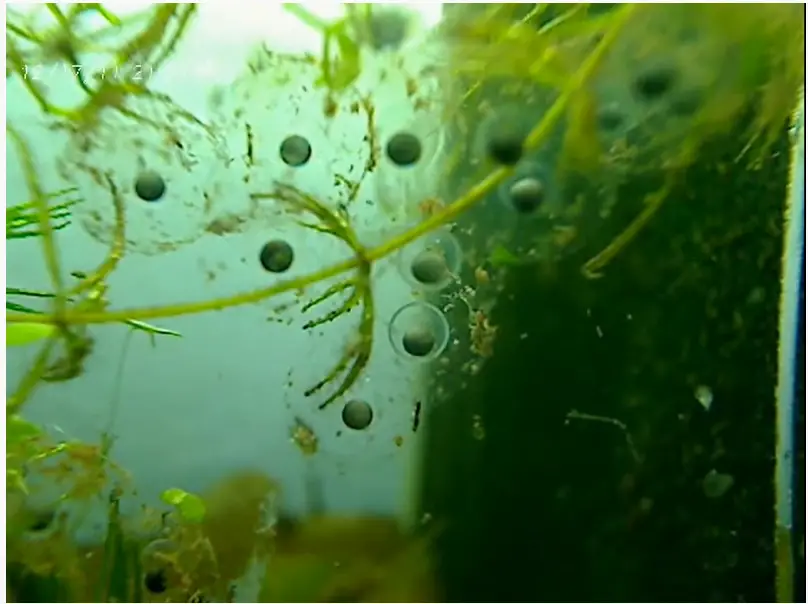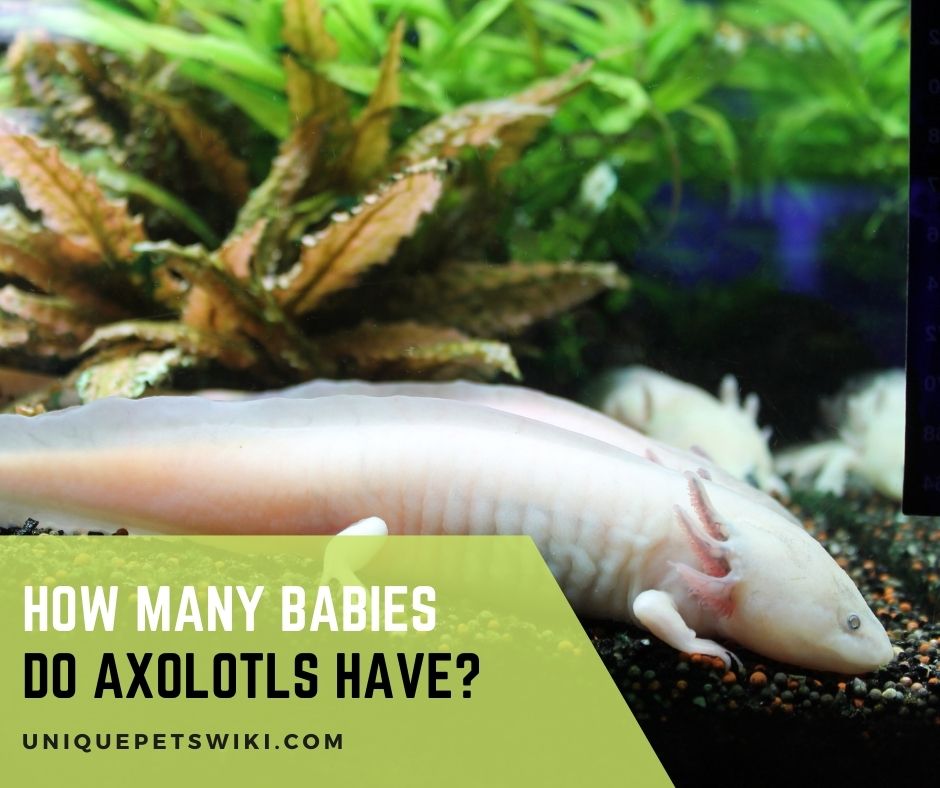Axolotls, like other marine animals, lay eggs. Male and female axolotls mate after reaching sexual maturity, and the female lays eggs following fertilization.
Eggs go through several phases of development before hatching and producing babies. So, How Many Babies Do Axolotls Have?
Axolotls can lay hundreds of eggs in a single breeding season, and the eggs hatch afterward to produce larvae. But not all eggs will hatch into larvae.
So, we will discuss the survival rate of axolotl eggs, and the distinction between fertilized and unfertilized eggs.
The number of eggs laid by an axolotl and how they hatch will also be clarified. So, read the entire article to learn how to raise and care for newborn axolotls.
Contents
How Many Babies Do Axolotls Have?
When a male axolotl discharges his sperm into the tank, the spermatophore is collected by a female axolotl and stored in the cloaca.
After fertilization, the egg will be released. The average number of eggs for an axolotl is 350. Under optimal conditions, axolotls can have 300 babies. According to studies, axolotls can lay up to 1500 eggs, but this is extremely rare.
The majority of axolotl eggs and spawn are fertilized, and most of them produce a larva. During spawning, however, unfertilized eggs may break free. As a result, not all of the eggs hatch and produce larvae.

What Is the Survival Rate of Axolotl Eggs?
Axolotl eggs have a survival rate of more than 95%, according to studies. Because axolotls only spawn fertilized eggs, unfertilized eggs may occasionally leak out during the spawning process.
Fertilized and viable eggs are not always safe and do not produce larvae. Egg viability is influenced by both environmental and genetic factors.
Temperature fluctuations can cause egg hatching to be delayed or even lethal. Axolotl eggs require 2 to 3 weeks to hatch; however, maintaining a constant temperature is critical for survival and egg hatching.
Lower temperatures cause egg hatching to be delayed, leading to egg degradation. Due to a scarcity of food, axolotls in the wild also devour their eggs. This is a defense mechanism against other predators as well.
What Do Fertilized Axolotl Eggs Look Like?
Axolotl fertilized eggs are white or black with a distinct covering of jelly. The interior organelles are protected by this jelly layer.
However, if the eggs are exposed to inappropriate conditions, they may degenerate or lay unfertilized eggs. Axolotl eggs that have died are cloudy, milky, and have air bubbles, and they are smaller than live eggs.
How often Do Axolotls Have Babies?
Axolotls typically have babies once a year. However, they can have multiple litters in a single year if the conditions are right. Each litter usually consists of around 300 baby axolotls.
After fertilization, female axolotls can lay up to a thousand eggs. All of these eggs do not result in the birth of a baby. The temperature, availability of food, water chemistry, and PH levels of the water all affect the survival of these eggs.
Fertilized eggs contain live embryos that produce small larvae after hatching. However, this does not always occur because axolotls eat their eggs when hungry.
As a result, the eggs must be removed from the tank without being damaged and kept in a proper habitat.
Baby Axolotl Caring
If the temperature is appropriate, the fertilized eggs will hatch and produce larvae.
The temperature is kept at 72 degrees Fahrenheit; axolotl eggs hatch in 15 days. Maintain the water parameters, especially the PH of the water, to aid the hatching process.
The hatching process can be delayed if the temperature is not maintained. Cooler water delays the hatching of eggs, while warm water causes the eggs to deteriorate. The larva rips through the jelly layer of eggs and emerges.
If a larva cannot emerge after hatching, you can tear the jelly layer by hand. You can see that some larvae are quite active after hatching, while others are lethargic and small.
They are cannibalistic. As a result, divide the larvae into groups based on their size.
The water chemistry must be adjusted to meet the needs of developing newborns. For example, first-week larvae require a temperature of 68 degrees Fahrenheit.
You should feed them nutritious food high in protein because they are still growing.
Larvae do not begin feeding immediately after hatching because the egg yolk in their stomach inhibits them. Aside from that, their organs aren’t fully grown or ready.
Two to three days after hatching, they begin to feed. It’s a clue that you need to feed your larvae when they notice prey movements and start wiggling.
PENN-PLAX Quick-Net Aquarium Fish Nets
- ESSENTIAL TOOL FOR FISHKEEPING: It’s always good to have an extra fish net for your aquarium! In addition to cleaning up some extra fish food that was accidentally poured, it becomes a handy tool when you need to quickly handle fish, and transfer them between tanks. They’re safe to use with both freshwater and saltwater fish, and come in various sizes!
- DURABLE, STRONG, AND SAFE: Each fish net features a vinyl covered, two-part braided handle that provides for an ergonomic grip, ensuring reliable operation with its strong design. Our aquarium fish nets won’t bend or become distorted over time, even with repetitive use. The mesh netting is appropriate for almost any type of aquarium fish, both freshwater and saltwater.
- MEASUREMENTS: The QN4 model of our Quick-Net line features a 4” x 3” net, with a handle length of 10”
- COLOR MAY VARY: Please be advised that our fish nets come in various shades of blue and green. We will ship based on availability. But rest assured, your fish won’t mind the difference in color, as long as they’re safely transported.
- SHOP PENN-PLAX FOR ALL YOUR PET’S NEEDS: PENN-PLAX is a manufacturer and distributor of top quality pet supplies, who specialize in creating excellent pet products for animals, both great and small.
Last update on 2022-12-29 / Affiliate links / Images from Amazon Product Advertising API
Conclusion
Axolotls can lay thousands of eggs, but on average, they only lay 330. A large percentage of the eggs are fertilized. Eggs hatch in 17 days if the temperature and conditions are favorable.
Some eggs are injured during the hatching process, and others are left unfertilized. As the hatching process takes longer, the number of hatching eggs decreases.
Larvae emerge from the egg by tearing through the jelly layer. It is vital to keep the temperature and pH constant on the first day.
Larvae begin to wibble after 2 to 3 days, indicating that food is appealing. As a result, you must feed nutrient-dense foods such as shrimp and small worms.

